Collector’s Corner: Mike Ascherman
Mike Ascherman has been collecting obscure records for as long as he remembers. In the following interview we will dive deep behind those long lost records and more.
Born in 1954, he grew up in Queens, New York City, where he spent his entire life. Ascherman has an incredible knowledge behind rare records and all those weird and fun records nobody else could find these days.
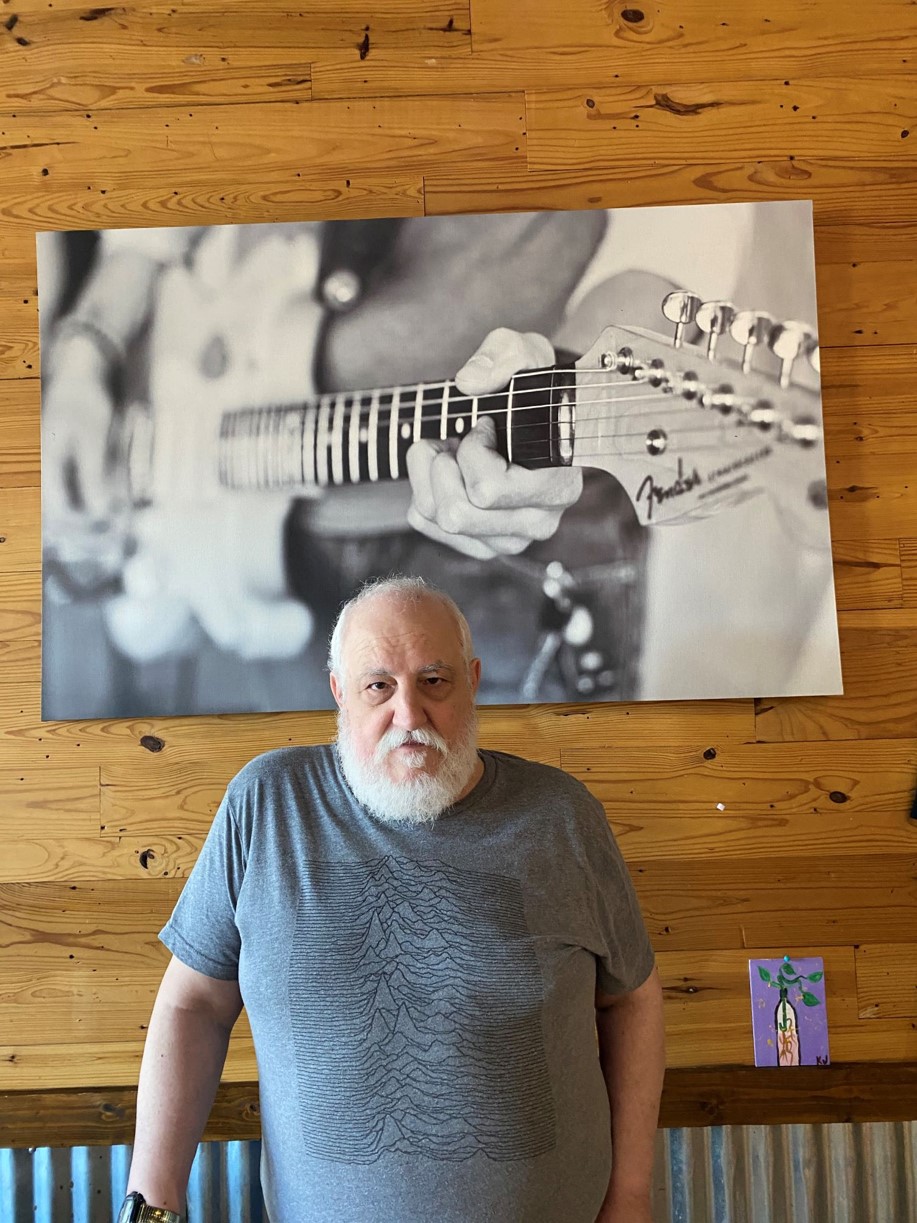
“Always doing it differently”
Where and when did you grow up? Was music a big part of your family life?
Mike Ascherman: I was born in 1954, the year Joe McCarthy tried to take on the Army and lost. I grew up in the borough of Queens in New York City, where I’ve lived my entire life, except a few days or so because I was born in Manhattan. That was because I decided to show up at 6 in the morning and there were no hospitals in Queens to handle births at that hour. In a way, that set the pattern of my life, always doing it differently.
I can’t say if music was a BIG part of family life, but it was there. My father had some records, basically classical, opera and folk. You could say I was the first of our crowd to be an ethnic music fan as I grew attached to a large box set of music of the United Nations. In fact, when I was clearing out my mom’s apartment several years ago, I did indeed find that box set and kept it.
My first ever record was a 45, a copy of ‘The Ballad of Davy Crockett’ on yellow vinyl. (No, I don’t have that.) I played that over and over on the family Victrola, one of those old boxes with a tone arm heavier than most turntables these days.
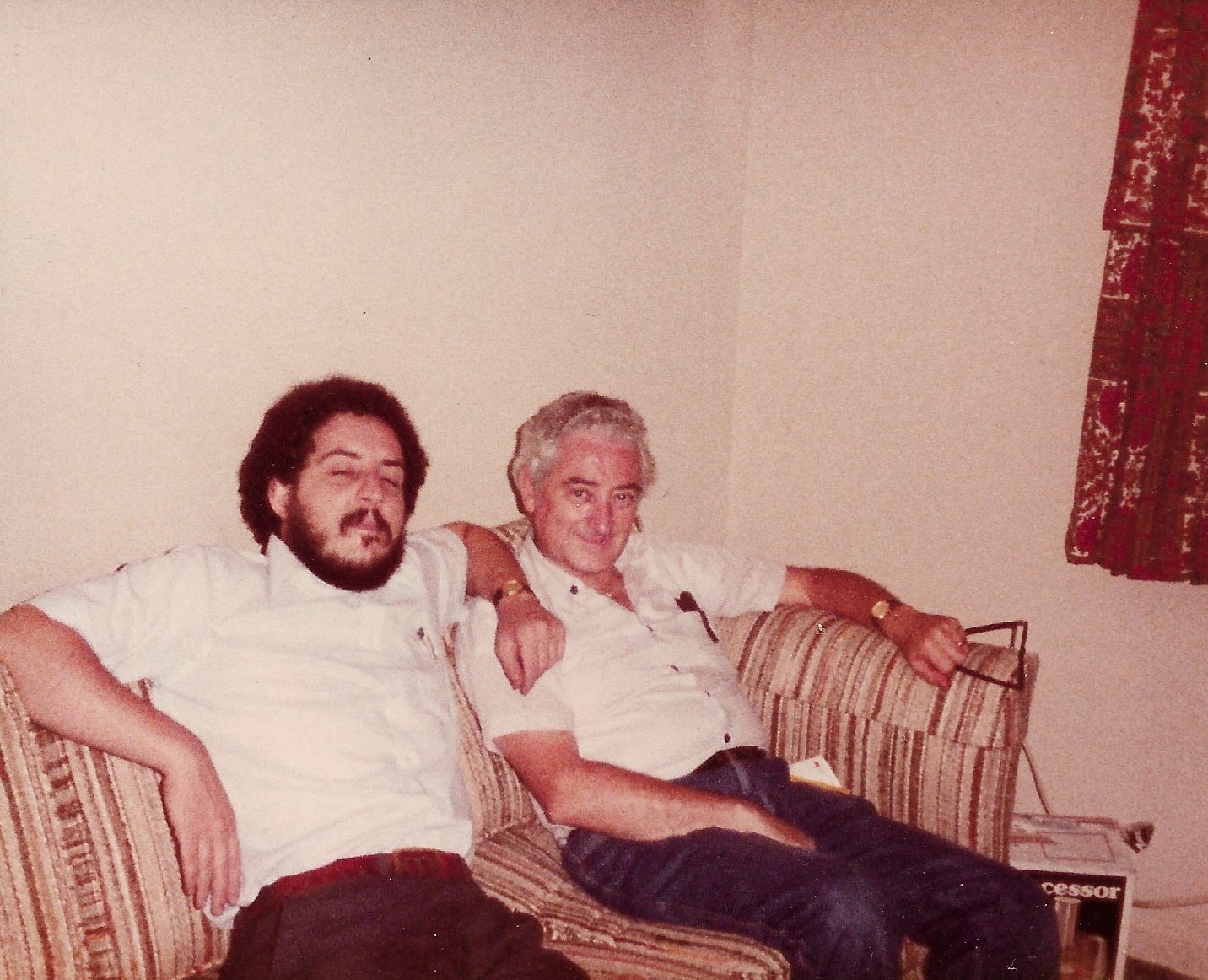
What was it about music that made you start collecting records?
Two factors could be said to be responsible for that. First, naturally, my lifelong love of music. For whatever reason, music always resonated more with me than just about every other aspect of my life as I grew up. There is a special magic about music that can’t really be specified. It is what it is.
Second and more of a factor is my affliction with Obsessive-Compulsive Disorder, going back to a time long before anyone had a clue that was something. After burning through many other addictions, you could say I settled on records as a less harmful addiction (along with a chronic cough, playing with my facial hair, compulsive hand washing, a need to move symmetrically, taking my last step on a flight of stairs with my right foot, et cetera).
Collecting becomes as much about the object as its intrinsic function. (In this case, the music appreciation). I know many collectors who deny this, but if that were so, they would be happy with just having the music in some playable format and not care about having originals, rare variations or whatever. This is the difference between being a music fan and a record collector. Collecting IS about the object.
I’ve had other collections throughout my life, but the records became the main focus. That’s in large part that magical thing that can’t be properly described. But the main reason is that unlike most other collecting hobbies, it is multi-faceted. It’s not just about the object and what it represents (like a baseball card, postage stamp or coin). You don’t only look at it and admire it like a visual work of art. There’s the music, which is the leading factor in why you want the record (I hope). Plus, there’s art; there’s literature (lyrics and liner notes); there’s comedy in all those (intentional and otherwise); there’s drama as well.
Do you recall what are some of the first singles or LP’s you got that fascinated you enough to get some more?
As mentioned above, my first record (that was mine and not everybody’s) was the Davy Crockett 45 sometime in the later 50s. When the Beatles hit here, I excitedly got a copy of ‘She Loves You’ as a gift. Some of my friends made fun of me for getting it since in 1963/4, it wasn’t considered cool for boys to own hit records; that was a “girl thing.” You could call this my first exposure to musical hipsterism.
My first serious purchase of records took place in 1968. We used to go visit my grandmother, aunt and uncle in the Bronx every Saturday. This particular day, my father was going to the local department store E.J. Korvettes to buy something. I tagged along taking my few saved dollars wanting to buy a copy of the first Doors album. That was on sale for $2.99 as was the Four Tops ‘Greatest Hits’. That was my plan, but then dad said I should go look at the singles. Now being part of the cool FM radio crowd, I said singles weren’t cool, but he just repeated himself. Little did he know the monster he was unleashing. I went to a big box filled with singles marked “3 for a dollar” (I think) and pulled out some Doors and Cream. So far, so good. FM hipster quotient maintained. Then dad directed me over to the current singles at 89 cents a pop.
Then it happened. I pulled out one single, my first ever guilty pleasure – Richard Harris ‘MacArthur Park’. So much for my hipster quotient.
Over the years, it went downhill from there. At one point, I had over 100 different covers of ‘MacPark’. They’re mostly gone, but I still have that same copy of the single I bought 55 years ago. And it plays fine. (Thankfully, it was never played on that Victrola with the massive tone arm.)
Is there a certain record that truly inspired you to become a collector?
That would be tough to say. One choice would be Beauregarde on F-Empire. It was the first record I bought that fell into the category of local or private press records. It was the record that first alerted me to the fact that these types of records existed and opened up a fascinating new world that I wanted to get lost in (and I did).
What are some of the most interesting records in your collection?
Another tough one to say; there are just so many that could qualify. I’ll try to give a good sampling.
At this point, they would more likely be singles rather than albums, as that’s where my collecting concentration is these days.
The best starting point would be Jerry Solomon. I have possibly the only complete collection of his singles, which were in fact the source material for the Sundazed/Modern Harmonics reissue a few years ago..
The most out there one I have is called ‘Stop the Watergate’ by an unknown artist from 1973. It’s a poem with a highly melodramatic orchestral accompaniment. The poem is about Nixon and Watergate, though Tricky Dick is never referred to by his name but rather as Rich Millhouse. It ends with two young boys talking about how they don’t understand what they just heard and one boy offering the other his peach. This is the normal side. The other side (untitled) is a 7-minute monologue by the poem’s author about how he plans to use this to bring Nixon down. It involved making 35,000 promo kits for the single that he would sell in front of one of the department stores in Manhattan, and the effects different levels of sales would have on bringing the Nixon Administration to its knees.
A final one of note to mention is a song-poem record on the Columbine label from 1984. It just recently got its “world premiere” on a friend’s radio show on the WESU station. He was doing a special program devoted to song poems and I offered this one for his use. The song is called ‘Path of a Ship’ and the music is in the vein of Pat Benatar semi-hard rock. That sounds pretty ordinary until I mention the author of the lyrics is one Celine Dion. Could the path be of a ship called Titanic?
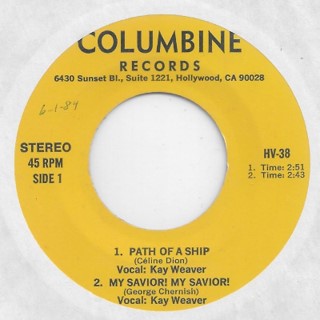
“Looking for ways to be different”
Who have been some of your “mentors” in record collecting? Who have you learned the most from?
I could call my first mentor the author Lillian Roxon. In 1970 or ’71, I bought a copy of her Rock Encyclopedia. Already being in a frame of mind that wanted to not be part of the musical herd and explore the unknown, I was intrigued by the number of bands she wrote about that were unfamiliar. My goal became to hear every one of those bands and I pretty much succeeded. That turned me on to such (then) unknown bands as Ultimate Spinach, Beacon Street Union, United States of America, Silver Apples (where I could never find a vinyl copy of the first LP, but had it on cassette and 8-track, which had ‘Oscillations’ on it 3 times to fill out the 4 programs), H.P. Lovecraft and Pearls Before Swine to name a few. Only two albums in there eluded me, Mad River and The Remains. I had to wait over ten years for those.
As the 80s rolled around and I got into psych music, my first mentor was Paul Major. I met Paul in 1980/1 at the two local NYC record fairs, the Prince George Hotel and the notorious Event Center. It was at the first show at the latter that I remember seeing Paul. He had a table full of LPs of which I’d no idea what most were (I really wish I could recall what was in those boxes – I’m sure Paul has no clue either). I bought two albums, ‘Cheerful Insanity’ of Giles, Giles & Fripp and Wind in the Willows. Not exactly a sterling start. I’d see him at the shows for a while. We knew each other by sight, but as often happens in our world we never formally introduced ourselves. Until one day, I saw an auction in Goldmine and bid on and won a copy of Mogan David and His Winos ‘Savage Young Winos’. I noticed the seller lived in Manhattan where I frequently worked. I asked if I could pick up instead of doing the mail and he said sure. When we met, there was instant recognition. “It’s you!” “I know you.” I came in and we started talking about what we were collecting which led us to psych private presses. I asked him if he knew of an obscure record I’d seen in the old Jerry Osbourne guide (pre-Rockin’ Records) on the odd GWR label called Gandalf the Grey. Paul went over to his shelf and pulled out a copy. The rest, as they say, is history.
Who have I learned the most from? Probably myself, or more accurately, my spirit of musical adventure and my contrariness in not wanting to be part of the herd and looking for ways to be different.
“‘Acid Dreams’ was the one that had the most profound effect on me”
Is there an album that has profoundly affected you more than others?
This would be an odd choice of sorts. It’s not so much a top favorite, even by the artist, but it is the first one I found and heard, and it did change how I listened to music more than any other record I’ve owned. That was ‘H to He Who Am the Only One’ by Van der Graaf Generator, to this day still my favorite rock artists.
I bought a copy out of the Sam Goody bargain bins in 1972 near Stony Brook University which I was attending at the time. (I could say that I spent more time at Sam Goody than I did in class; it would almost be accurate.) I bought it because I had no clue what it was and it looked intriguing. Also, I was already at a point where I reveled in having totally different musical taste than everyone else. The musically correct choices then were the Dead, Allmans and the spreading SoCal soft rock scene, polluting my eardrums with the likes of Crosby Stills & Nash (but not Young), Poco, Loggins & Messina and other sonic swill.
I was intrigued by the instrumentation, seeing a band without a lead guitarist, but rather reeds & keyboards accompanied by an acoustic guitar. Also, seeing a vocalist named Peter Hammill. I was a big reader of the Village Voice and of their columnist Pete Hammill, so seeing a musician with a similar name triggered my curiosity. I grabbed it, went back to my dorm room and slapped the record onto my tiny little portable stereo turntable. It was like nothing I’d ever heard before and made me crave hearing more like this. As a bonus, it drove my SoCal-loving suitemates up the proverbial wall.
There are two other albums that had a similar influence when my “serious” collecting era commenced in about 1980/81. First was the ‘Acid Dreams’ compilation. I’d been hitting the record stores in Greenwich Village for some time, mainly through the latter part of the 70s when my focus had been on listening to jazz and modern classical & avant-garde. As I got back to rock around this time, I started seeing some of the early garage and psych comps (‘Pebbles,’ ‘Endless Journey,’ ‘Echoes in Time,’ et cetera) and started grabbing them out of curiosity. ‘Acid Dreams’ was the one that had the most profound effect on me and was the one I could say was responsible for turning my interest toward the psychedelic realm rather than garage. Also, hearing some of the tracks on the ‘Endless Journeys’ like C.A. Quintet, Hunger and Finchley Boys continued me along this path.
The second album would be Morgen on Probe. I always say there are only a small number of records that truly blew me away on first listening. Morgen sits at the top of that heap. From the opening drums and riff to the fade out of the last song, I was entranced like nothing else since maybe that first Van der Graaf listen. And it’s still one of my top LPs and one of the few big-ticket albums I keep originals of.
An interesting sidenote: Back to those Sam Goody bargain bins. I can remember seeing them filled with dollar copies of Morgen. To this day, I cannot tell you why I didn’t buy a single one of them. My only thought at that time was that something about the cover turned me off to it. I also saw a few copies of St. Stephen; that cover did turn me off. I did buy a copy of Litter ‘Emerge’. I was actually looking for that because my local station (WNEW-FM) used to play ‘Silly People’ all the time and I loved it. Unfortunately, I thought the whole album would sound like that and was extremely turned off when it didn’t (still am).
Unlikeliest places you’ve found records? Memorable dollar-bin finds?
Unlikeliest? Have to think about if there were. I usually looked in the likely places.
Probably, my unlikeliest was a guy in the Village who sold records off the street on 6th Avenue. Literally. He would just lay his wares on the sidewalk by the street curb. The two times I saw him, he had only about half a dozen records, all but one of which were typical 12” singles. The first time I saw him, the odd record was a copy of Noyes & the Boys for $2. When I was back there two weeks later, the price had inflated to $3. The odd record this time was a copy of Stevie Cochran’s ‘No Need to Worry’.
I’ve had more than my share of memorable dollar bind finds aside from the Sam Goody bargain bins (and the regrettable almost-find).
The most interesting find (the story, not the record though it’s a good one) was Tom Mahairas. I had a day off that I used to go to a weekday flea market held in the parking lot of a large mall on Long Island. There was a large truck trailer that was filled with hundreds of boxes of LPs, all $1 each. I was making my way through them. I’d pulled out the Mahairas and a kids’ sleepaway camp record when the vendor came to me and said I have to stop looking because he’d just sold the entire contents to another person. I asked the new owner if I could buy the two records and thankfully, he said yes, and for the same $1 each.
Another memorable find was in the dollar bin of a store run by one of the most hated record store owners in the Village. That added extra satisfaction to the find. The record was Blue Eyed Soul ‘You Ain’t No Weight’. Another time, I found the first known copy of the Christian rock favorite, Miles Of Smiles. I always say that the best revenge is success.
Though the price on this last one was $3, the spirit of the dollar find still was met. This was another flea market find, this time at the famous Roosevelt Raceway flea market. There was a duo that called themselves The Record Van because (at that time in the mid to late 80s) they exclusively sold at the flea market out of their van. They would just lay the records on the ground. The first time I saw them, all records were $1. That day the bulk of the collection were UK pressings in immaculate condition. Nothing really esoteric; the obscurest records I recall were the early Al Stewart albums. It was the last time I saw them that produced the memorable $3 find. At this time, their price had tripled and they had very few albums to offer. In the couple of minutes it took to see them all, only one looked worth checking, which I did and bought it. After all, how could I go wrong spending $3 on a record by a band called Pholas Dactylus?
“There’s something fascinating about the so-called “real people” music.”
You have a rather extensive collection of underground music. Can you describe what you like to collect the most?
As a pre-collector in my school days (as I’d referred), it was looking for whatever others in my social groups didn’t know or want to hear. It was part being adventurous and part being just plain contrary. Wanting to be different. That led me to explore more than just what was being fed to us on the radio. While there were fine stations around to listen to, they didn’t present much of the more obscure artists and so browsing records bins became a more important method of discovery and adventure (i.e., not knowing what I was getting and taking chances that it was good).
As I discovered progressive rock, especially those so-called non-commercial artists, I began to look to go farther and farther out in sound. Eventually, I “progressed” away from rock (as the commercial rock sound was regressing to soft music or more simple rock sounds). I got into jazz and modern classical including experimental music. This coincided with my return to college in the mid-70s (I’d dropped out for a couple of years to personally regroup). There, I expanded my interest and knowledge base by taking elective courses in music appreciation from a study of symphonies to general 20th Century classical music (where my final paper was a musical analysis of a Van der Graaf composition in classical terms – my professor gave me an “A,” but also commented he didn’t like the music – oh well) to a course in electronic music taught by a composer named Hubert S. Howe. That fully sparked an interest in electronic sounds which I still have to date.
As a “serious” collector (starting in the 80s), initially it was psych. It’s been 40 years since Paul Major turned me on to the twin towers of reality, Peter Grudzien and Kenneth Higney and I went on to discover many others. Some approached the towers, but none ever supplanted those at the top. I still own those copies I got from Paul.
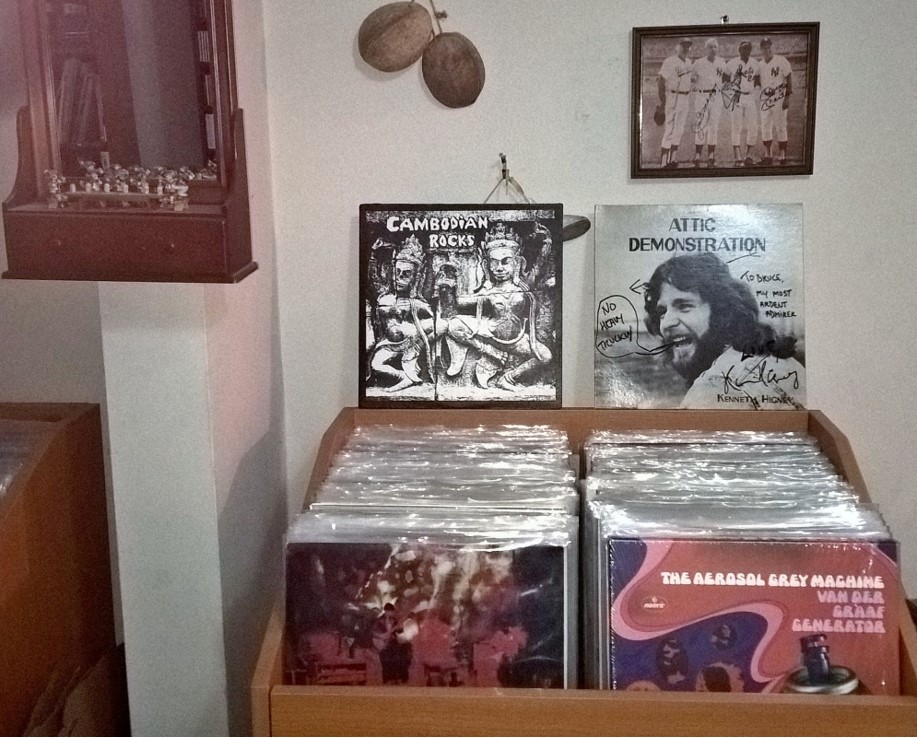
It was very easy to gravitate toward the odder records, as it was something that had always intrigued me in various arts. I was a long-time fan of P.D.Q. Back and psychotronic films of all varieties, so it only made sense that would carry over into the realm of the private press record. Besides, they’re a lot more fun to listen to.
There’s something fascinating about the so-called “real people” music. Yes, a lot of it is somewhat laughable in its oddness or crudity/ineptness. But while we might at first be laughing at them (or the music), as we grow, that becomes laughing with them while admiring the uncommon artistry of their work. Whatever else, they had the courage to record, release and expose their inner selves, something most of us never have and likely never will.
I actually did such a thing a couple of times in my youth. Thankfully lost to the world of music is the first effort, a cassette made in the summer of 1970 by a duo calling itself The Electric Kazoo Band. It was my friend Steve and I fooling around with kazoos we purchased a short while before in an East Village store while waiting for the doors of the Fillmore East to open to see the Mothers of Invention. Not surprising, our instrumentals sounded like outtakes from ‘Uncle Meat’ and ‘Burnt Weeny Sandwich,’ or at least that was our intent. Sprinkled through were a few vocal treats of improvised “poems” that made David Peel lyrics seem like Shakespeare. On one “song”, Steve started going on about a green man entering a purple room; or it may have been a purple man entering a green room. Another song had Steve ranting out the toxic ingredients of a cigarette, to which I yelled “Get rid of that trash and smoke some hash!” When we played it back, I sounded exactly like W.C. Fields. (Just as I intended. Yeahhhhh, that’s the ticket!) What were we on? you might ask. Absolutely nothing.
Whatever happened to Steve? Well, he became a podiatrist. The last time we spoke was in the early 2000s and he went into a 5-minute rant about bombing Saddam Hussein and Iraq back into the Stone Age. Too bad we didn’t set it to music and record it.
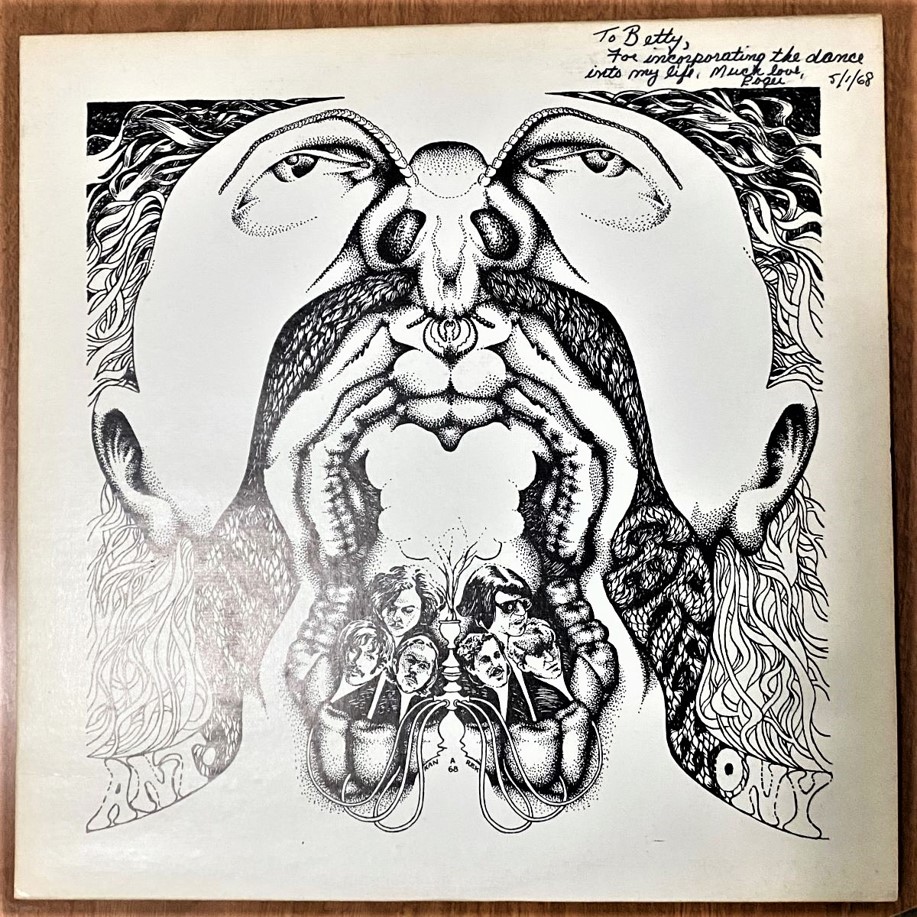
Do you own anything else which is widely unheard by others?
Quite a lot, though these days I’d say primarily in the 7” realm and more in a non-psychedelic vein. A lot of out there real people gems as well as things like mind-blowing song poems way beyond the standard Rodd Keith normality of that genre. A few realities are (or will be) mentioned elsewhere here.
There is also a CD-r culled from my second musical endeavor in 1977 or ’78 during my college days. That came from two cassette full of experiments. The CD-r, a sort of “Best Of” (tongue piercing cheek), has been heard by a few unfortunate individuals. Perhaps it’s best to leave it that way.
As to rarity, what are your 5 rarest records?
LP’s:
Peabody Co. acetates
Terry Riley: ‘A Rainbow in Curved Air’ (test pressing with unique paste-on cover)
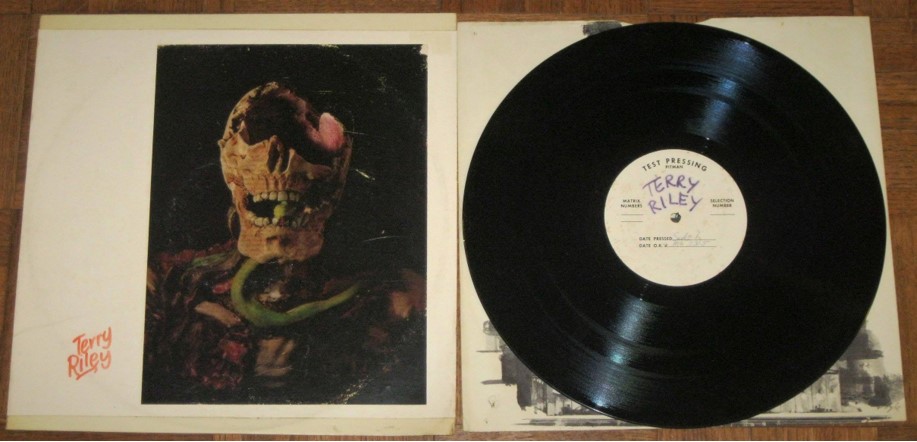
Cambodian Rocks (grey vinyl test pressing)
The Arthur Braun Expedition (vanity/Wildwood -related)
Peter J. Cox: ‘Running Away With Yourself’ (UK DIY punk primitive that makes Higney sound well-produced)
7”:
Love Special Delivery: ‘Lonely I Will Be’ (little known psych 45 not in TeenBeat Mayhem! book)
Mood: ‘In the Amber Fields’ (ultra-rare folk/garage comped on Pebbles 16)
Pell Brothers: ‘Itch To Leave’ (songs co-written by teenage Peter Grudzien)
Cindy Ernst: ‘Candy and Cobalt’
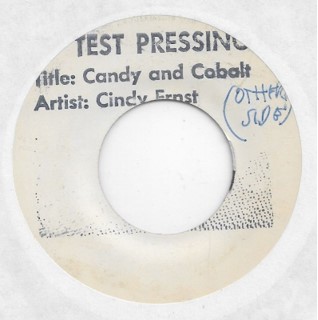
The Sewups: ‘Not Tiddy, Toddy’ (pre-teenage Mark Tucker – ‘Batstew’)
How about gracing us with a trip down memory lane and describing a day of record shopping back in the days? Where did you get all the information about particular records?
The best typical days for me to describe would be in my younger days of the 80s as I first got into a lot of the music I enjoy now.
A typical record shopping day in the late 80s would come after a week of work. On Saturday morning, I would take the subway to the 6th Avenue/West 4th Street stop in the Village. Sometimes, I’d be alone; sometimes I would meet up with a friend.
The plan was basically the same each day. Start at one end of the Village and hit all the stores on a path that eventually ended in the East Village. For variety, I/we would start in the East Village and go west toward 6th Avenue.
The atypical day was going to my favorite record store, Pyramid Records, on 7th Avenue just below 23rd Street and close to Midnight Records (often a quick stop in there before Pyramid).
Pyramid Records deserves its own section, so with your permission (or without), I’m going to create one.
“Tell me, Mike, about Pyramid Records.”
Thanks for asking; glad to. Pyramid opened in 1982/3. It was called Pyramid because there used to be some kind of club (possibly X-rated) there by the name and the sign was still up when they took it over. As a cost-cutting move, they decided to leave it and use the name. It was around the corner from where Paul Major lived at the time. Paul was possibly their first customer, certainly the first looking for private presses, scoring the first day with a Gandalf the Grey. Paul had “dibs” on the odd records that showed up until he got married and moved away. At this point, I inherited the “dibs.”
I’d found it not long after it opened and became an instant regular customer. The finds there were amazing. There were psych records galore and at great prices. There were two owners. Steve ran the store. Jeff was the money man and the first “master digger” I knew. He would hit all the flea markets and thrifts and who knows what other sources and drop off incredible boxes full of records at the store (more on one amazing one shortly). Jeff’s job probably helped him in having the time to hunt and find sources no one else would know about or have. He was a City Marshall.
The list of rare private presses and other psych I found in there was staggering. I walked in one day in the late 80s and pulled out the first known copy of BLO ‘First Chapter’ for $15, buying it because the liner notes mentioned Ginger Baker. Two weeks later I was back and found a second copy (same price) along with the only copy I’ve ever found of Spirits & Worm (also $15). The second BLO had a letter from the band’s manager to the president of Manticore Records trying to get him interested in becoming the US distributor for the album. Finding the two copies in Pyramid some 15 years after the fact tells us what Mr. Manticore thought of the idea.
Then there was the time I passed on an acetate of David Crosby’s 1st solo album because I hated the record (and the Cros). I don’t really regret it except when I think about what that could sell for now.
My two most memorable Pyramid scores:
The first was the Peabody Co. acetates about a year or two before the store closed in the early 90s (more on that later). Jeff had found those who knew where. I knew better than to ever ask.
The second was Daybreak on RPC in 1988, I believe. This is the amazing one hinted at above, I came into the store one Saturday morning and started to browse. Jeff had dropped off a box of LPs he bought at the flea market and Steve was going through them. He pulled out one and asked me if I knew it as it was a private press. I looked it over, but nothing was familiar about it, except I remembered the first record guide I’d bought having records with a couple of odd sounding band names on it. (Rubber Memory anyone?). As I looked it over something did ring a bell, or more accurately, someone. One of the names of the band members was familiar: Rich Alper, the organist. I knew someone by that name from when I went to Stony Brook University at the beginning of the 70s. Rich had been my roommate at freshman orientation. I looked at the cover for a location, the front said Camden New Jersey. I remembered him coming from a town in upstate New York called Pearl River, not Camden. Then I flipped the cover and saw a contact address. It was indeed Pearl River. I looked at the faded looking newspaper photo above that and saw the organist did indeed look like what I remembered Rich looked like.
I turned to Steve and told him this, saying I’d pay $100 for this record without even hearing it. He then played me the first track. It blew me away. I was determined not to leave without this record. Unfortunately, Steve had to find out from Jeff what he wanted for it. That meant coming back later. I did my rounds of the stores in the Village keeping an eye on my watch more than the record racks. Getting back there a little before closing, I found that I only had to pay an extra $50. I couldn’t get the money out of my wallet fast enough.
There are two ironies in this story. First, when I knew Rich, he’d mentioned being a musician in a band, but never mentioned the record which actually came out right about that time. Talk about life changing! Imagine if in 1971, I had found out about the existence of private presses, ten years before I actually did.
The second irony is when I worked on finding the band. I found the drummer very quickly. He was in touch with everyone else in the band with one exception. Guess who?
The store’s demise came in the early 90s. It was in a building owned by New York City. The City neglected the property, and it was falling apart. There was a residential apartment above it, and who knows what the inhabitants were doing in there. Toward the end, there was a flood of water cascading down the back wall, rendering it unusable and damaging some of the records that had been in the bins there. It seems that somehow, they managed to get a pigeon stuffed into one of the water pipes and it burst, creating the Pyramid Waterfall.
Eventually, Jeff and Steve went on a rent strike and sued for the repairs that the City was neglecting. This became not just a long-term case, but a permanent one. Eventually Jeff got tired of all the nonsense and was ready to give up the store. He sublet it to a father and son he knew from a flea market who turned it into a collectible store. All was fine until the City found out. They used that as an excuse to evict them and void the lease. The storefront was never fixed up or rented again. To this day, if you walk down 7th Avenue past 23rd Street, you can still see the Pyramid sign above a shuttered store.
Do you have records you can’t have enough of, even after you’ve heard them a thousand times before.
Absolutely, but there are certain limits. Most are more common records I’ve known as far back as the 60s & 70s. There are a handful of the obscure ones that have similar status.
One thing I should mention is that I never play any particular record too often. Despite my OCD, I’ve always managed to control this. For me, the more I like a record, the more I try not to overplay it. That way, each listening experience sounds fresh and special.
Granted, there are records I do play more but that often is done in the context of using them as sonic wallpaper. Those wouldn’t be ones that fall into this special category.
Are there 10, what you might call essential albums to own?
At this stage of my life, honestly, nothing is really essential for me.
As recommendations to lovers of private presses, “psych” and “reality,” here are my Essential Ten in no particular order. As has been throughout my life, this is subject to change based on my mood at the time. By the time you publish this, it could change a little.
Peter Grudzien: ‘The Unicorn’
Love: ‘Forever Changes’
Morgen: ‘Morgen’
Van der Graaf Generator: ‘Pawn Hearts’
Bob Dylan: ‘Highway 61 Revisited’
Stephen David Heitkotter (the original mix, not the expanded reissue)
C.A. Quintet: ‘Trip Thru Hell’
Armando Piazza: ‘Suan’ (again the original version, not any of the reissues which have all mixed up the track order)
Neil Young: ‘Psychedelic Pill’
Lastly, pick a Beatles album.
How about books, any written material you might suggest as a good read?
To start with a music-related book, I’ll tout Frank Zappa’s autobiography. No explanation needed, just read it.
Outside of music, one of my favorite books is Jim Bouton’s ‘Ball Four’ (and the subsequent updates). It’s a multi-faceted book that is mainly about his love of the game of baseball and sharing the inside story of what makes it so. It’s also a story about the darker side of the sport and business, the first book to reveal such. And, it’s very philosophical.
One I don’t really have to recommend as I’m sure pretty much anyone reading this has read it is ‘Lord of the Rings’. If it wasn’t for that, I may never have gotten into all the obscure psych records and private presses. As I started my serious collecting, my love of LOTR made me notice and become interested in songs and band names taken from the books. One of the first I came across was Gandalf on Capitol. Not long after came Gandalf the Grey, as I described in my first encounter with Mr. Major.
As a last recommendation, I’ll throw in a bit of shameless self-promotion. I highly recommend Patrick the Lama’s “Acid Archives” to which I was a contributor (about 50 or 60 records, including some of the most obscure entries in the book). It was a joy working on those and getting well acquainted with Patrick through all of our exchanges on the book and many other matters and issues, music and otherwise. Though we never met in person or spoke directly, I feel I got to know him as though we had. His sudden passing was a huge blow personally and to all who got to know him through his writings.
And it’s great to see that I’m listed as an author on Amazon, even though I’m technically not.
You often post very interesting photos on Facebook. There’s a photo of you with J.R. Houvener, Jr. aka Nicodemus… Tell us about that evening.
I believe Paul Major was behind the camera. In the photo, clockwise from lower left are the back of the head of Geoff (whose apartment Paul was living in), Matchez (L.C. Houvener) Nicodemus, original psych collector Jack Streitman, some guy in a funny striped shirt and Parallel World partner “Audio” Al Rohde. As I pointed out on the Facebook thread, I did not partake of the pizza. I’ve never eaten a slice of pizza in my life. Nor did I partake of the Molson Ale as I’d recently gone straight edge (28 years by the time this comes out).
The occasion for this gathering was the visit of Nicodemus and Matchez to New York to meet with us and work out details for the Parallel World release of the ‘Light in the Dark’ CD, a compilation assembled from several of the tapes they brought us. These tapes were several of the unknown number of cassette albums the brothers had recorded and put out in very small quantities that were sold at local Detroit record stores.
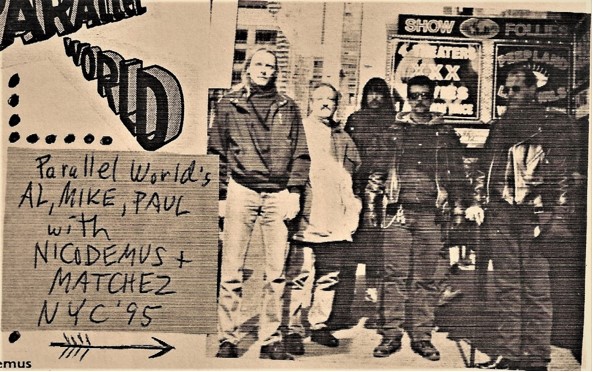
The details of what specifically went on that night are lost to time and aging memories. My best memory is of the five of us (Nico, Matchez, Paul, Al and me) walking through Times Square in, I believe, the early evening hours. A couple of photos exist somewhere. One I know of is included in the Kugelberg-produced book on Paul and his legendary catalogs. Another photo appeared in the sole Parallel World promo zine.
What happened to Nicodemus and what was he like…
Nicodemus was a fascinating individual, what some would call a true character. He was, of course, superbly talented as a musician, a writer and an artist. He was a warm and friendly person who enjoyed sharing his arts with anyone who was interested in such. His background was partially Native American and he engaged in great study of shamanism, which had a huge influence over how he conducted his day-to-day life.
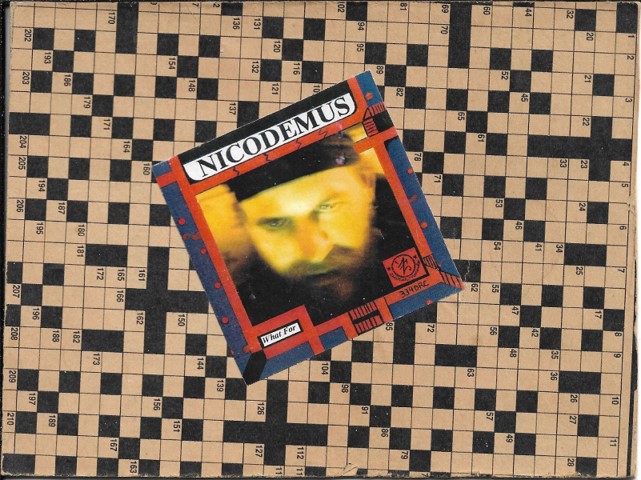
He was somewhat spacy, whether from his ingestion of certain pharmaceuticals or from the brain tumor that plagued him much of his life. When we met him, he told us how he’d been diagnosed with the tumor and given 7 years to live. That had been over 7 years before this. He went on to live almost another 20 years beyond that. I would credit much of that to the great strength of spirit he had.
We kept in touch for a while, but as I became more engulfed in my profession over the 2000s, we lost contact with each other. I didn’t hear much about him until learning of his passing about 10 year ago.
One of the treasures from my collection I’ve held onto is a postcard he sent in the mid-90s as appreciation for my part in the Parallel World effort to bring their music out to a larger fan base and as a memory of the brothers’ visit with us. Both sides are shown here.
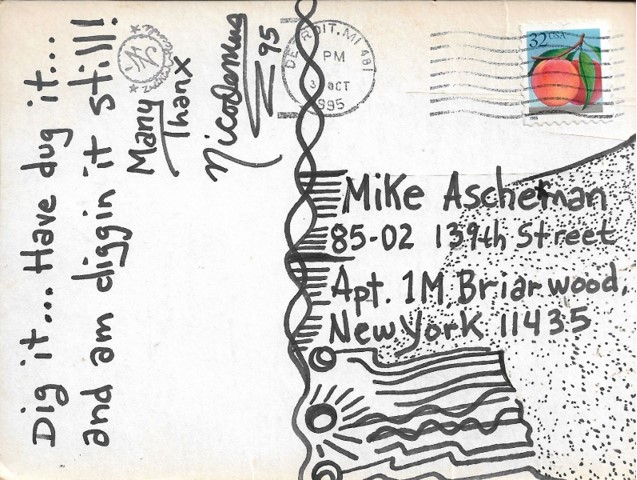
I would love it if you could talk about some of the fanzines you like. I have seen some truly obscure stuff on your fanpage, like for instance a fanzine by Mafster Harald Dalezal.
While I’ve enjoyed fanzines, over the years, I’ve lost a good deal of interest in reading them. Now I care more about hearing the music than reading the same rather normal, often mundane, background stories.
When I first started collecting seriously, they were of much greater interest and value to me in my search for newer unknown recordings. Also, they were few and far between and gave something to look forward to rather than when there would be an overabundance of monthly collector-oriented magazines and fanzines all seemingly repeating the same few stories endlessly.
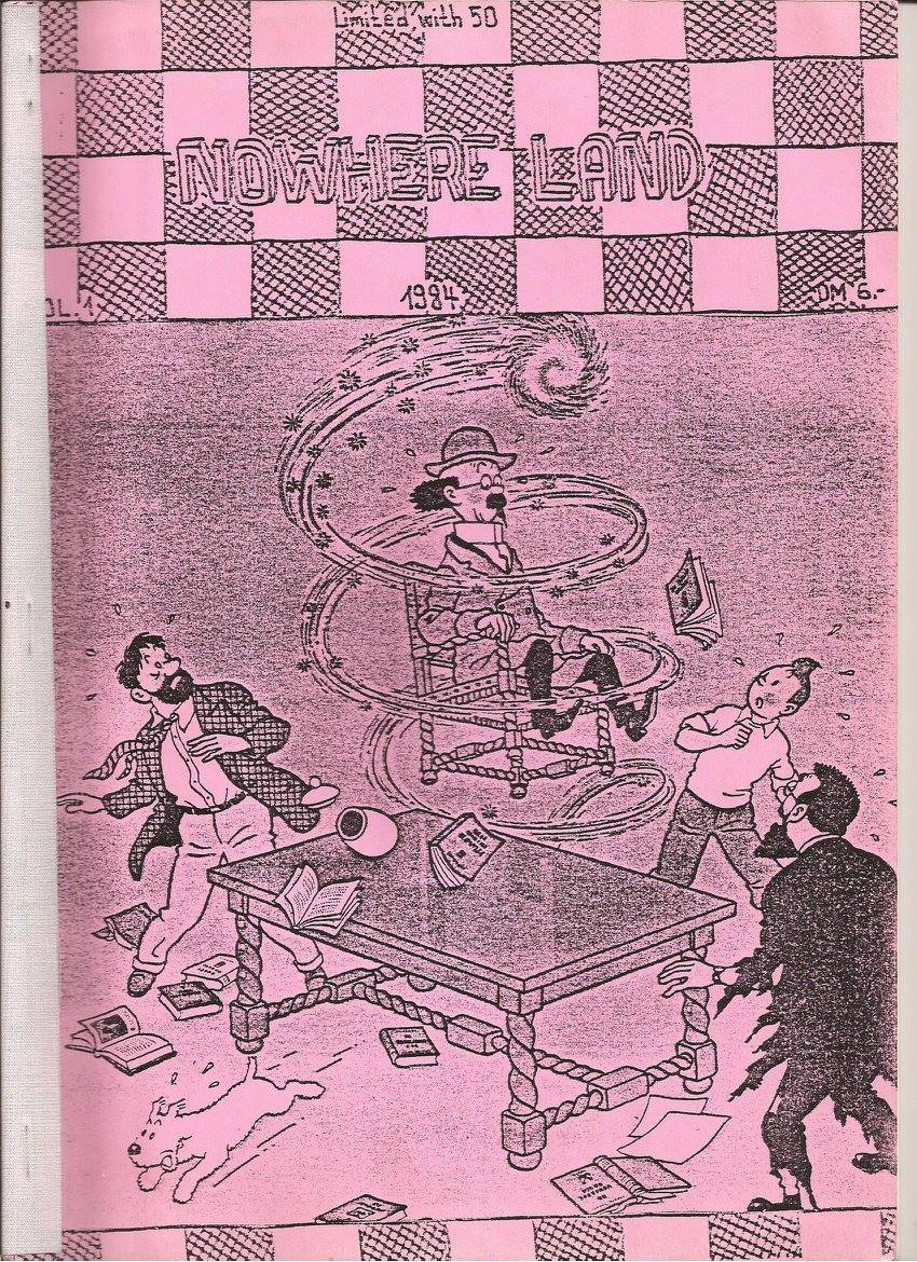
Harald’s two ‘zines were among the first I’d had and were interesting as artifacts of an enthusiast rather than as serious journalistic writing. Much of the material was borrowed from other sources, so the issues were more of an artistic compilation than a fanzine. They were constructed in the finest DIY-style with a nice color scheme in the paper used to print them. Most of all, of course, they were (and are) fun to leaf through.
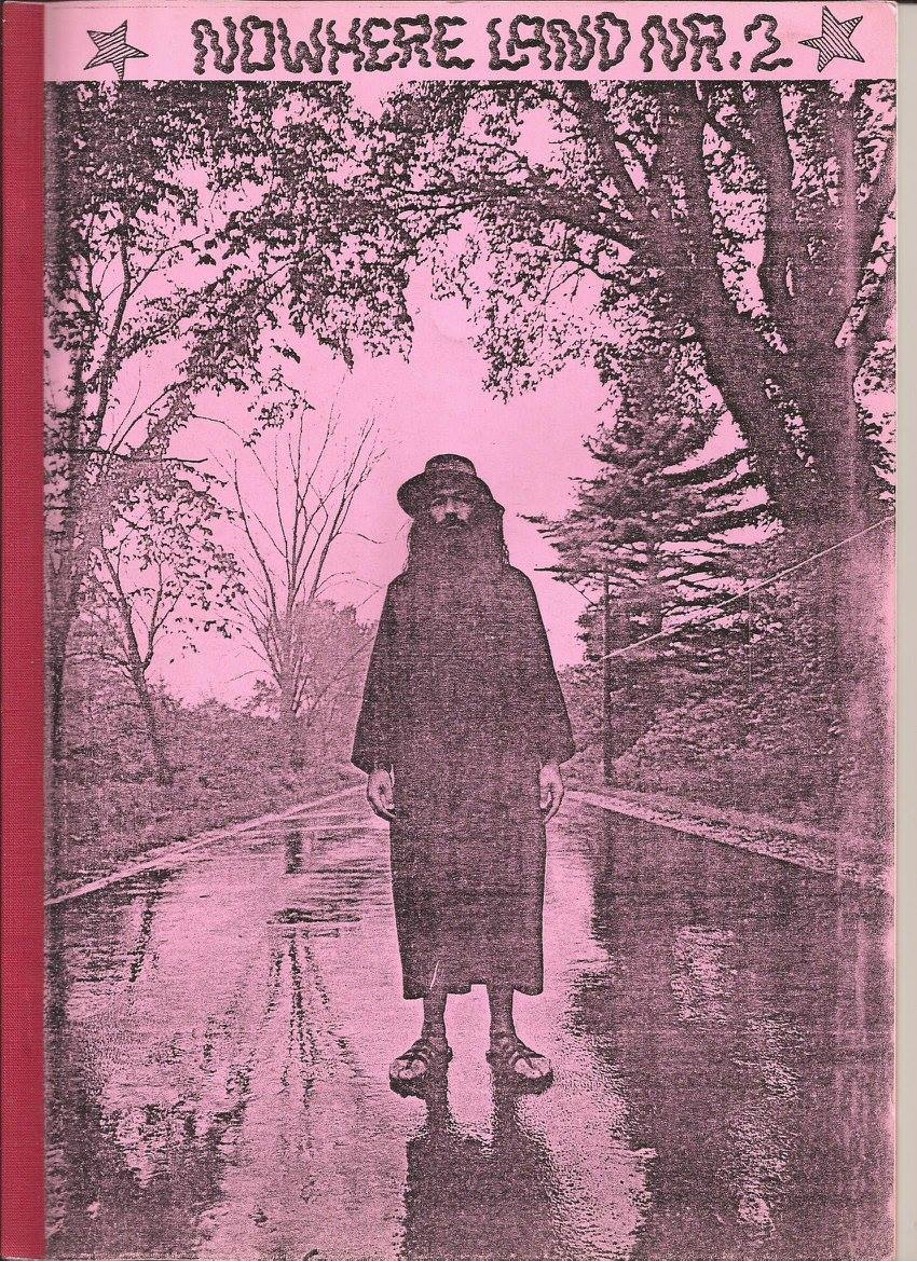
What about Steve Smith catalogues? He had a very special way of describing the music…
I’ve only seen the legendary first catalog (that I posted on my Facebook page). It’s a work of comedic genius (mostly intentional, some otherwise). Some of the descriptions (i.e., Left Handed Marriage – a major disappointment when I finally got to hear it) are so over the top that they go from the ridiculous to the sublime and full circle back to ridiculous. It’s a tongue-piercing-cheek culmination of the trend that had developed into describing records in more and more florid terms to the point where I would read a record description in a list and think, “That all sounds very nice, but what the f**k does the music actually sound like?”
Smith’s descriptions skewered those serious efforts masterfully.
I love that you had the photo of Konrad as your profile pic awhile ago. How did you first get to hear his album, ‘Evil’ and what do you think of it?
Like so many other odd and obscure records, I found it in a record store bargain bin in the mid to late 80s and bought it on speculation. Though, with a front cover like that and reading some of the lyrics on the back, I wouldn’t really say there was much speculation to it, and I wasn’t disappointed in the slightest.
I’ve told the story about contacting Konrad back then many times and it was included in the promotional materials for the reissue, so I’ll just give the Cliff Notes version here.
The copy included a business card for the record label owned by one Barry Konarik. I called to find out more about Konrad and see if I could get more copies. Barry spoke at length about Konrad (always in the third person) and dance music and another project involving an album of dance music by Jim Morrison’s nephew. It was only after getting my order that I realized Barry was Konrad, though he spoke of him as a separate person. That only added to the mystique.
After that, I started selling the copies by mail order (Goldmine ads and a mail order catalog) as well as at local record fairs. It was after selling a copy to Johan Kugelberg at an early WFMU Record Fair that the record really hit big. Johan was blown away by it and introduced it to an entirely different and larger audience.
What do I think of it? The same as I thought the first time I heard it. It’s a work of real* genius.
*pun painfully intended
Have you found something new lately you would like to recommend to our readers?
Musically, I’ve become a big fan of the German band Vucan. They have a sound reminiscent of 70s heavy progressive/psych rock. Great sound, dynamic singer who is also a multi-instrumentalist.
Non-musically, I’ve become addicted to the British mystery series Midsomer Murders. It’s a great quirky show with top-notch writing and acting, memorable characters (regulars, guest stars and victims) and imaginative and often whimsical murders. I prefer the episodes with the original DCI Barnaby (John Nettles) to the current one (Neil Dudgeon, no relation to Gus).
“The question becomes do you own your collection or does your collection own you?”
This was a lot of fun. Last word is yours.
Last word?
I don’t know. Eat your vegetables? They keep you regular, they’re real good for ya (Frank Zappa)
But seriously folks.
One area not asked about though mentioned briefly in passing is going to concerts. So, here near the end, I’d like to take some time to reminisce.
While I never attended a huge number over the course of my life, and none since 2012, I have very special memories of many of those I’ve seen. A fair number have been talked about online and in my Facebook conversations, but I don’t know if I’ve ever really put them into perspective.
My first rock concert was seeing Ten Years After in 1968 at one of my future alma maters, CUNY at Queens (where I later took those music courses). Later I also saw The Band there, before they became bloated with horn sections and backup singers.
I was a little too young to make it to the Fillmore too much though I did manage to get there three times. One was seeing the Mothers perform a Mother’s Day concert in 1970. (Sorry, I didn’t bring my mom, though others in the audience had). Opening were the original post-Blues Project Seatrain (prior to turning into a hippie country band) and Insect Trust, which I’ve mentioned many times to open-mouthed reactions, especially when I say I didn’t like them then and to this day I still don’t.
I also saw Quicksilver for the first time at the Fillmore in early 1971, not long before the venue closed. It was actually at this show that I learned the hard way that John Cipollina and Nicky Hopkins had left the band. That brought a bit of a downer for the concert, though that was more than made up for by the next show in the summer of 1972. As well as seeing a great concert, it marked the first of two occasions in which I snuck a tape recorder in to tape the show. I still have both the cassettes and the CD-r made from them about 25 years ago.
The first show I saw at the Fillmore was actually the most interesting. Something not well-highlighted in the history is the brief run of Tuesday night concerts featuring local New York performers. It continued in the spirit of the main weekend shows of having a very eclectic mix of music. This particular night the opening act was Billy Batson & Holy Moses, who had an LP on RCA that’s somewhat known by the psych crowd. They were followed by the David Amram Quintet. At first, there were a lot of jeers and sarcastic catcalls over seeing a “straight” musician on the stage. However, by the end of the first number, the audience was totally won over and they were the highlight of a momentous concert. The third act was Charisma, who I later learned had 2 LPs on Roulette. When I found copies “ten years after,” I was incredibly disappointed in what I heard. It was nothing like the awesome heavy sounds I’d heard at the Fillmore.
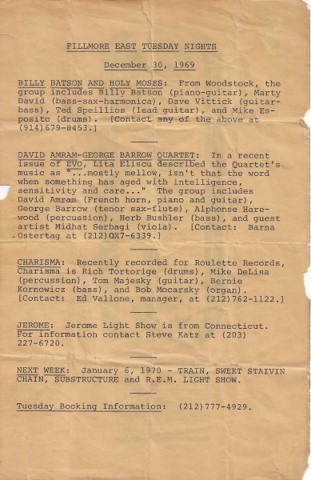
Also, I went to several concerts that were part of the Schaeffer Music Festival held during the summers in Central Park. Bands I saw were Quicksilver (twice), Pure Food & Drug Act (with Harvey Mandel and Sugar Cane Harris) opening for QMS one time, Mountain (watching Corky Laing terrorize his drum kits and send shards of drumsticks flying throughout was as amazing as watching Leslie West’s great mannerisms while he soloed) and Jethro Tull introducing some music from their forthcoming album Aqualung. This was before Anderson took them into their “serious phase” and was still a joy to watch in all his old maniacal glory. Opening for Tull was a local band who had a guitarist who looked remarkably like Leslie West, down to even copying his mannerisms (bending over his guitar with mouth open wide). We wondered who this wannabe was. I later found out his name was Larry West, Leslie’s brother. The band was Haystacks Balboa.
I wrote online recently about going to one night of the 1970 attempt at another Woodstock on Randall’s Island off of Manhattan. I wanted to go the first night to see Jimi Hendrix, but my two friends I was going with outvoted me to go the second night to see the super group Tony Williams Lifetime with Miles Davis, Jack Bruce and Eric Clapton. Sounded great. It would have been even better if they’d shown up. Years later I found out there was a disagreement over payments and only Ten Years After of the scheduled artists showed up. They were awesome to see again in their post-Woodstock glory. The rest of the night was filled with local bands as replacements. I remember seeing Boffalongo and the New York Rock & Roll Ensemble. Something I only learned recently when I came across a website about the festival was one band that I had no recollection whatsoever of seeing. That was Cactus. Ouch!
I saw Quicksilver a number more times in the early 70s when they played regularly at the venue that replaced the Fillmore as the place to go in the Village, Howard Stein’s Academy of Music. I saw them there, I would guess, 5 or 6 times. There were some great (and some not so great) bands opening for them, always 3 to a concert. Some are artists I still love to this day like ‘Argus’ era Wishbone Ash and Al Stewart (performing Past Present and Future live).
I also got to see Electric Light Orchestra there during their first US tour promoting the second LP. They opened along with Manfred Mann’s Earth band for Savoy Brown. Mann was on first and was great. ELO played second and the audience was wild, mainly because virtually the entire audience was there to see them. They did the typical 50-minute set for supporting acts. We were all screaming for an encore but there was none. When the stage crew came out to dismantle their set, we almost booed them off the stage. During the setup for Savoy Brown, most of the audience walked out. I lasted about one song of plodding bloooooooooooz then left. The real tragedy was that many of us there were members of MELLOW, the Move-Electric Light Orchestra-Wizzard Appreciation Society. This show had been hyped up in the fanzine, and there was supposed to be a special gathering after the show. I have no idea if it ever happened since everyone left. It was never mentioned in subsequent letters.
My best concert experiences were during my first college days at SUNY at Stony Brook, which I talk about often when old concert chats pop up, especially the best or worst concerts you’ve seen, “which one of these bands did I never see?,” et cetera. The first show I saw was the Beach Boys promoting their new ‘Surf’s Up’ album. Then I saw in short order Pink Floyd, and a Columbia triple bill of Byrds, Mahavishnu and Blue Öyster Cult. Other highlights were Steve Miller, Incredible String Band, Hot Tuna, Kinks (a bit disappointing though), the Mothers with Flo & Eddie, a then unknown Andy Kaufman and more. And of course, I did see Quicksilver. They performed on Halloween in 1972 and it was perhaps my most memorable time seeing them because of two things. First, during their encores, my friend Steve & I jumped up on the stage and started playing Dino’s congas. We did this because it was a tradition during their encore jam for Valenti to grab someone out of the audience and have them join him on congas. We just decided it was our night to be chosen. This led to a minor onslaught and in no time, the stage was filled with dancing audience members. I jammed on the congas for a while, then organist Chuck Steaks handed me his beer. Wish I could have saved the can. The second part was when we were able to get in to hang with the backstage hospitality room and get stoned with the band. A great night. Unfortunately, I had classes the next day; not surprising. I have no recollection of them.
During the later part of the 70s, there were two classical concerts of note. The first was seeing the world premiere of Steve Reich’s ‘Music For 18 Musicians’. It was a mesmerizing experience. The piece was over an hour in length, but it seemed to fly by so quickly as I was absorbed in the music, waiting for each subtle change in pattern or pitch and taking in how jarring those slight changes could be after 5 minutes of the same sound.
The second was seeing a concert in 1978 at Carnegie Hall of a little-known modern composer named Paul Reif. I had been listening to a local classical station (WQXR) one afternoon while doing homework. It featured his music and an interview. I was enjoying his music very much and when they talked about the Carnegie performance, I wanted to go. They give a phone number to call for information. Either later that day or the next day, I called the number and was very surprised to find myself talking to Paul Reif himself. We chatted for a little while as he gave me the info. Then he mentioned there would be a small reception after and invited me. It was a most enjoyable night, and I think he was glad to see someone on the young side (24 at the time) interested in his music. I learned he passed away not long after the concert. I later was able to find several albums of his compositions on the Serenus label, and still own them.
In my serious collector era, I’ve never gotten to see many shows. Life has had a way of clogging up my time – work, personal matters, or whatever. It does make the few I’ve seen so very special. Seeing the Nihilist Spasm Band come down to New York to play at the Knitting Factory rates near the top of my lifelong concert experiences, in large part because I never thought it would happen. I don’t know if they ever played any other gigs here (NYC). I have a recollection of buying a t-shirt of theirs after the show, but haven’t seen it in years, though I still hope one day, I’ll stumble across it in my place. I did find my Charisma “Mad Hatter” shirt, so there is hope.
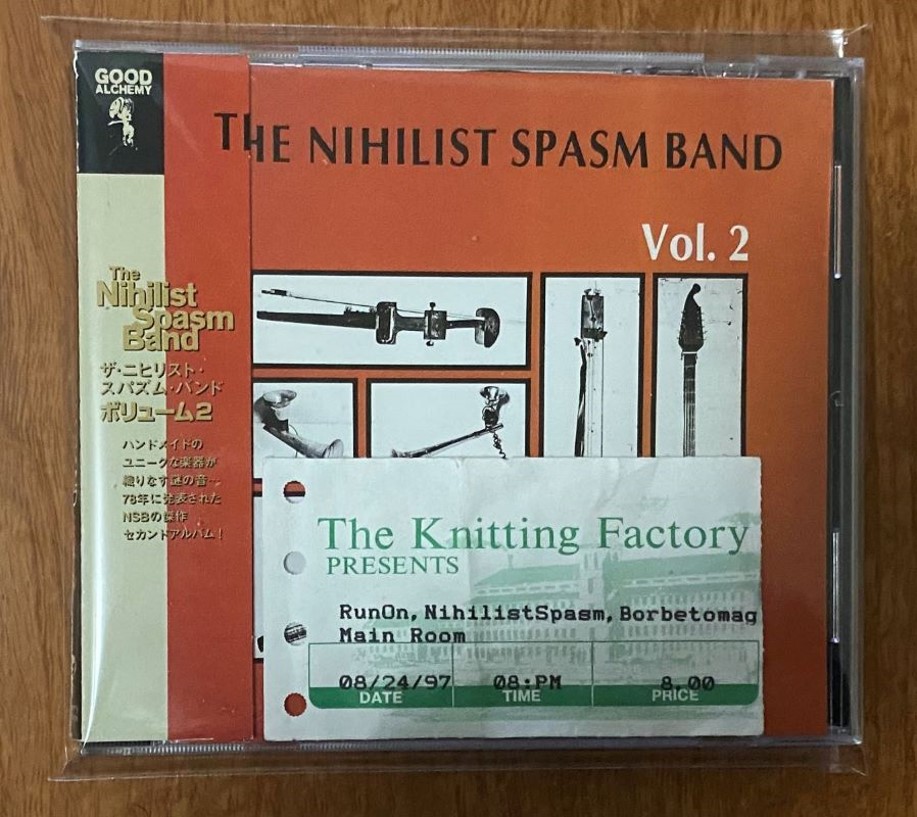
Knitting Factory was also where I got to see Flower Travellin’ Band and Ya Ho Wha 13 when they toured while promoting the book on the family. It was nice meeting them before the show during the book signing at Other Music. They were super nice people and quite down to earth and most appreciative of their fandom.
In a way, it’s appropriate that the last two concerts I’ve seen were Van Der Graaf Generator, especially after waiting a lifetime for that to happen. I did see Hammill solo once in 1990, but the one prior opportunity to see the whole band live (1976) ended in a bout of pneumonia. If I never do see another live show (and that is looking to be a possibility), I couldn’t think of any better one for my last show than VDGG.
Finally, there’s my collecting philosophy I’ve developed over the years. My mantra, considered blasphemous by many, is “It’s only a record.”
While my love for music has remained mostly the same (though a little suppressed in my declining years), my feelings about the possession of the object have changed and become more tempered.
There’s a scene toward the end of the movie Charade where Audrey Hepburn realizes that the quarter of a million dollars they were all looking for was in the form of three innocuous-looking stamps on an envelope that she gave to a friend’s son. He traded them to a stamp dealer. When she went to the dealer and explained, he handed them over saying that for a few minutes they were his and that was enough.
I’ve had many, of the great records over the years. They’ve come and gone and the memory rather than the possession has become the important factor to me.
In the end, the question becomes do you own your collection or does your collection own you?
Klemen Breznikar
Headline photo: Apartment of Geoff Hutson and Paul Major, Autumn 1994 with a few guests

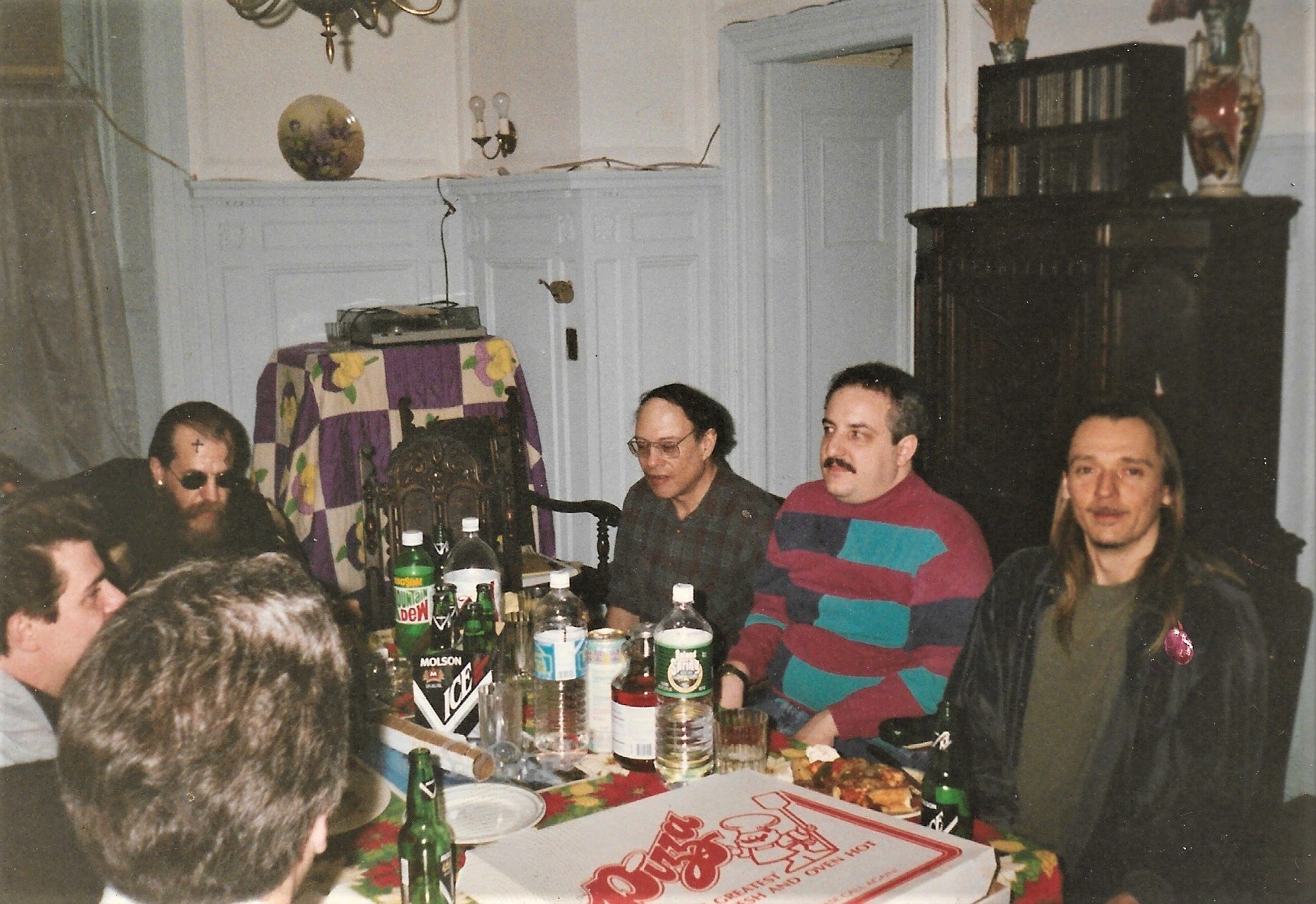

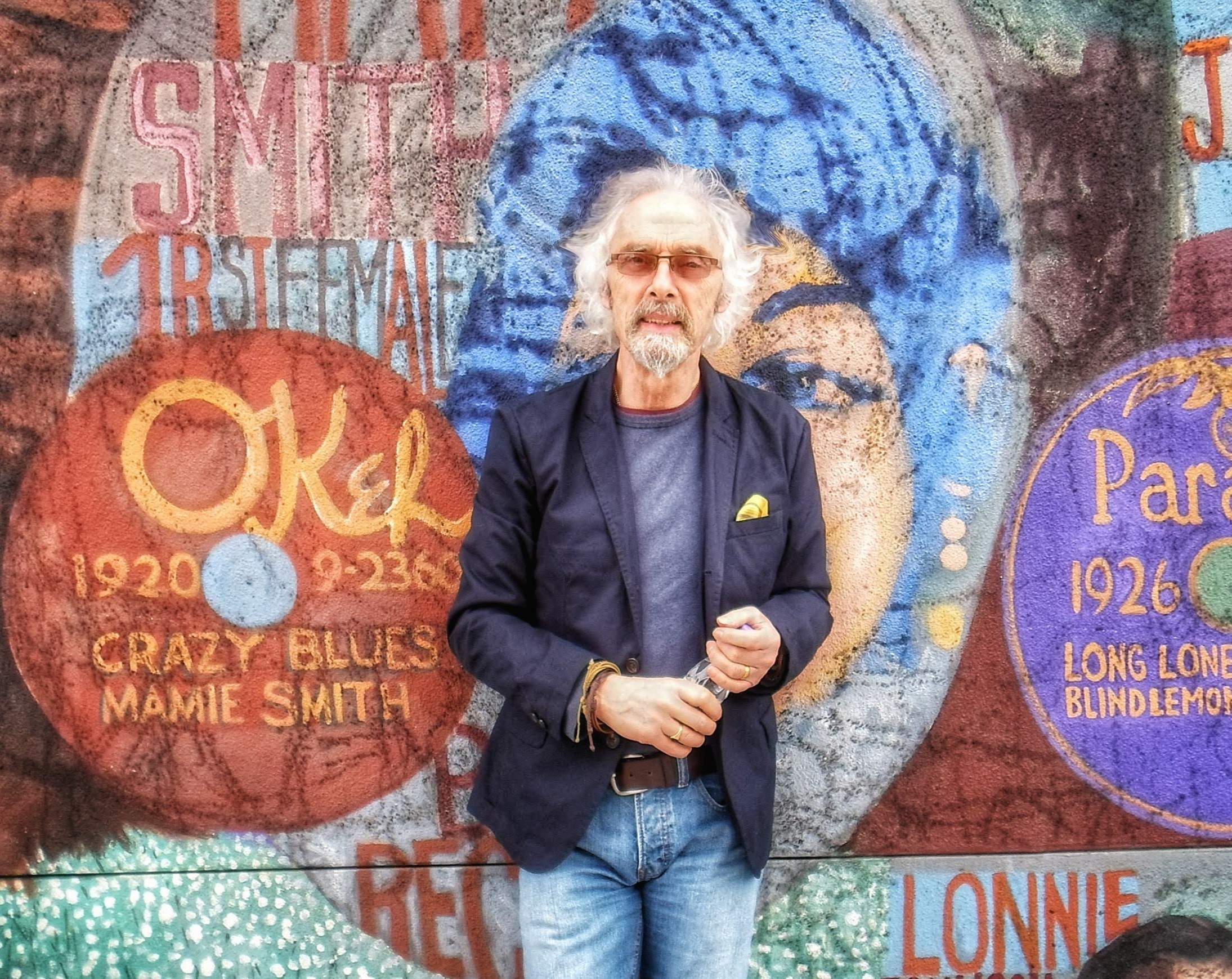

Thank you !
I am pretty sure those “strange scrawls” on the “Attic Demo” cover are not by me. You may have gotten played here. Just letting you know.